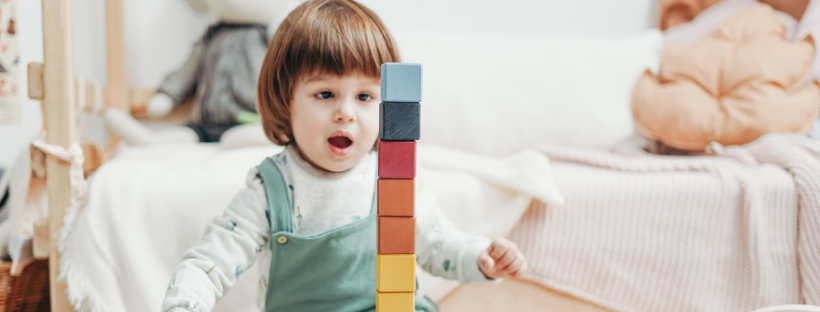“Sensory play is the foundation for all higher-level learning. Every time you engage the sensory system, you’re creating neural connections, which is good for complex development.”
- Stephanie Swinburne Occupational Therapist
.png)
Sensory play in early childhood is important for overall health and well-being. It forms the foundation of a child’s learning and perception - a base for later learning.
Babies start discovering the world around them primarily with their senses (touching, tasting, hearing, seeing, and smelling). Babies look at bright colors or lights, grasp their carer's fingers or hair, and put everything in their mouths. Learning through the five senses is beneficial even during the preschool and elementary school years.
Children learn about the different forms of expression by using multiple senses.
“For a small child, discussion and verbal learning have little educative power without actual experience. Learning rather happens through all the sensory channels. Children must live through, explore, and try things out to attach meaning to them”
- H. Hendrick
How to support sensory development?
Sensory play is anything that involves the use of one or several senses: touching, tasting, hearing, seeing, or smelling. Engaging the senses in play helps to develop motor skills, self-regulation, and sensory integration—and it is also fun!
The best way to support children's sensory development is through sensory play! Here are some concrete tips for sensory play activities that you can do with young children. The activities will help children to develop and fine-tune their sensory and motor skills, as well as to promote their creativity and emotional well-being.
How Kindiedays works?
Sensory play ideas!
Feet are sensitive to feeling different textures and surfaces. Walking barefoot has also health benefits! According to Rhythms of Play walking barefoot is a great way to help the feet (and body) develop correctly in childhood. Walking barefoot allows better control of foot position and lets children have more control over their feet when climbing, running, etc.
Therefore - it is a great idea to build a path or obstacle course where children can walk barefoot. The path can include different types of surfaces as water, sand, stones, carpets, and soft pillows as well as different styles of moving forward as jumping, tiptoeing, balancing... you name it!
- ZIPLOG BAG SENSORY ACTIVITY
Make a sensory zip-lock bag activity by filling a zip-lock bag with liquid (water or juice) and other little but safe items of your choice. Zip-lock bags are suitable for children over 12 months of age.
Once ready, you can tape the zip log bag on the table, on the floor on the window. Make sure that the bag is fully sealed and use safe materials to fill it, such as water and food coloring. Children can explore the bag by touching it and looking at it and how the liquid moves inside.
More Ziplog bag sensory ideas from 'Hands on as we grow' blog here.

.png)
.png)
.png)

.png)